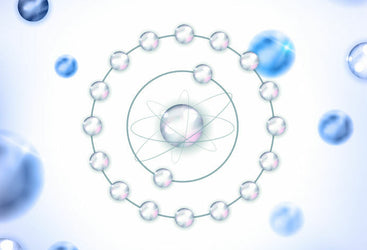No Products in the Cart

Cyanidin 3-glucoside (c3g) is a natural pigment found in a variety of dark-colored fruits, plants, and vegetables. It’s gaining popularity due to the potent antioxidant and anti-inflammatory effects. Scientists are investigating the effects of c3g on diabetes, cancer, and other conditions.
Potential Benefits of Cyanidin 3-Glucoside:

In animal studies, scientists observed the following effects of cyanidin 3-glucoside:
These results point to c3g as a promising option for improving blood sugar control.

According to preclinical research, C3g can lower cholesterol and thus potentially improve heart health.
Berry extracts containing cyanidin 3-glucoside reduced cholesterol levels in rats fed a high-cholesterol diet and also increased HDL cholesterol, which may be beneficial.
A study on diabetic rats showed less heart damage in the group treated with cyanidin 3-glucoside compared to controls.
C3g blocked the clogging process when applied to human blood platelets from healthy men and women.

People with metabolic syndrome usually have belly fat, and higher glucose levels and blood pressure, putting them at high risk for numerous diseases. A study on rats showed that c3g reversed symptoms of metabolic syndrome.

Dietary cyanidin 3-glucoside reversed signs of liver damage in mice with liver injury over eight weeks by reducing inflammation and cell death.
Helicobacter Pylori is a bacteria that can lead to a host of digestive problems, including ulcers and stomach cancer. One study found that cyanidin 3-glucoside reduced cell death in human stomach cells affected by H. Pylori by blocking the release of toxins. (1)
Cyanidin-3-glucoside (C3G) plays a role in the prevention of oxidative damage in several diseases. A study investigated the effect of C3G on AngII-induced oxidative stress and vascular inflammation in human endothelial cells (EA.hy926). C3G dose-dependently suppressed the free radicals and inhibited the nuclear factor-kappa B (NF-κB) signaling pathway by protecting the degradation of inhibitor of kappa B-alpha (IκB-α), inhibiting the expression and translocation of NF-κB into the nucleus through the down-regulation of NF-κB p65 and reducing the expression of inducible nitric oxide synthase (iNOS). Pretreatment with C3G not only prohibited the NF-κB signaling pathway but also promoted the activity of the nuclear erythroid-related factor 2 (Nrf2) signaling pathway through the upregulation of endogenous antioxidant enzymes. Particularly, we observed that C3G significantly enhanced the production of superoxide dismutase (SOD) and induced the expression of heme oxygenase (HO-1). Their findings confirm that C3G can protect against vascular endothelial cell inflammation induced by AngII. C3G may represent a promising dietary supplement for the prevention of inflammation, thereby decreasing the risk for the development of atherosclerosis. (2)
The effects of anthocyanins cyanidin-3-glucoside and peonidin-3-glucoside isolated from black rice were tested on different cancer cell lines. Results showed that the breast cancer cell line HS578T was the most sensitive to the two phytochemicals and experienced the strongest inhibition of cell growth. At the molecular level, researchers found that cyanidin-3-glucoside decreased the levels of cyclin-dependent kinases Cdk1 and Cdk2 concomitantly with a reduction of cyclins B1 and D1. In addition, Hyun et al.50 tested the effects of anthocyanins extracted from black rice on the growth of human monocytic leukemia cells. (3)
The data demonstrate that cyanidin-3-glucoside isolated from mulberry induced apoptosis in breast cancer (MDA-MB-453) cells, and therefore, has a potential as an anti-cancer agent. These results show that mulberry cyanidin-3-glucoside inhibit the proliferation and growth in vitro and in vivo model and, indicating the inhibition of tumor progression. (4)
Cyanidin-3-glucoside (C3G), a compound found in blackberry and other food products, was shown to possess chemopreventive and chemotherapeutic activity. C3G inhibited proliferation of a human lung carcinoma cell line, A549. Animal studies showed that C3G reduced the size of A549 tumor xenograft growth and significantly inhibited metastasis in nude mice. Mechanistic studies indicated that C3G inhibited migration and invasion of A549 tumor cells. These findings demonstrate for the first time that a purified compound of anthocyanin inhibits tumor promoter-induced carcinogenesis and tumor metastasis in vivo. (5)
C3G, an anthocyanin antioxidant, is reported to have protective effects on many organs. However, it remains unclear whether C3G protects against chemical-induced reproductive toxicity. A study was therefore to investigate the intervention of C3G on 1,3-DCP-induced reproductive toxicity in R2C Leydig cells. Most importantly, C3G intervention could up-regulate the cyclic adenosine monophosphate (cAMP) level and protein expression of steroidogenic acute regulatory protein and 3β-hydroxysteroid dehydrogenase. It was concluded that C3G is effective in reducing 1,3-DCP-induced reproductive toxicity via activating steroidogenic enzymes and cAMP level. (6)
Alzheimer's disease (AD) is mainly caused by the fibrillogenesis of amyloid-β protein (Aβ). Therefore, the development of effective inhibitors against Aβ fibrillogenesis offers great hope for the treatment of AD. Cyanidin-3-O-glucoside is a commonly found anthocyanin that is mainly present in fruits, with established neuroprotective effects in situ. (7)
The antiviral effects of black raspberry seed extract (RCS) and its fraction with molecular weight less than 1 kDa (RCS-F1) were examined against food-borne viral surrogates, murine norovirus-1 (MNV-1) and feline calicivirus-F9 (FCV-F9). Cyanidin-3-glucoside (C3G) and Gallic acid, identified by liquid chromatography-tandem mass spectrometry, showed inhibitory effects against the viruses. C3G was suggested to bind to MNV-1 RNA polymerase and to enlarge viral capsids using differential scanning fluorimetry and TEM, respectively. (8)
References: